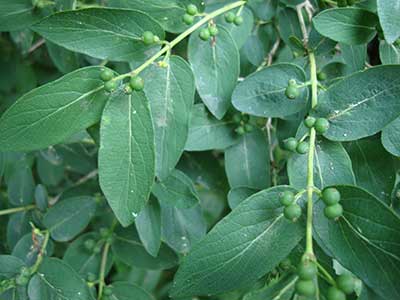Invasive Shrub: Honeysuckle
Why is honeysuckle a problem?

Like many other invasive species, honeysuckle develops new leaves early in spring and holds onto them late into the fall. This shrub can prevent light from reaching wildflowers and tree seedlings for the entire growing season. Without light, native flowers and trees eventually die.
How do I recognize it?
Honeysuckle shrubs range from three- to 15-feet tall. They typically have multiple arched stems. Older stems are hollow with shaggy bark. Honeysuckle flowers are tubular in shape and fragrant, producing red berries.
Where does it grow?
Honeysuckle prefers partial sunlight, but can be found in full sun or shade.
How does it spread?
Many bird species eat honeysuckle berries and spread the seeds throughout the woods and beyond. Clusters of this shrub are often found around the bases of other trees because honeysuckle seeds have been deposited by birds perching above.
How do I control it?
The best approach is the cut-and-herbicide treatment. This is because honeysuckle’s multi-stemmed and arching growth form makes it difficult to apply herbicide effectively without cutting the shrub down first.
All stems must be cut and treated for herbicide applications to be successful. Apply glyphosate (sold under the brand name Roundup and others) at a concentration of 20% active ingredient to the cut stump. Also effective is triclopyr (ester version) at 8 to 12% active ingredient.
